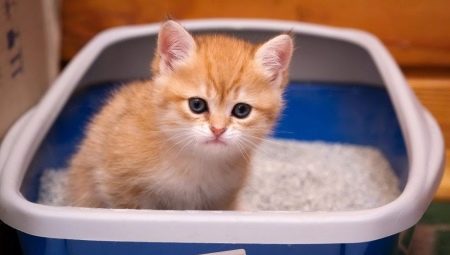Some people would like to take a fluffy (or not so) pet home, but the thought that it will be necessary to accustom it to the tray makes it necessary to postpone the dream until better times. The point is the lack of information, or more precisely, the correct information about the cat’s accustoming to the tray. This process is not the most difficult, although it involves a number of components that need to be considered.
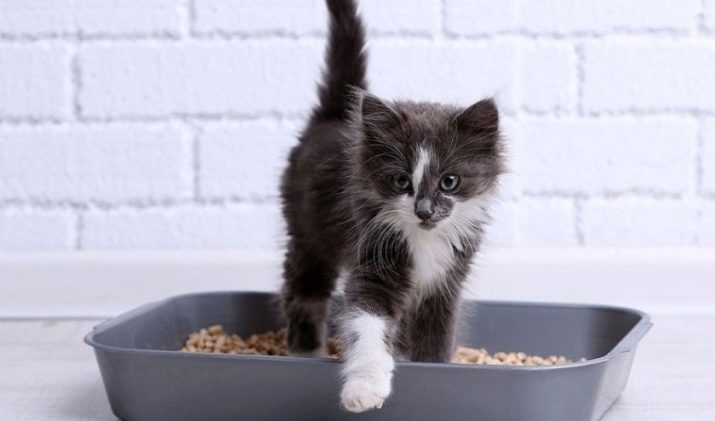
Where to begin?
Cats are very clean by nature. But a little kitten is just a child, and he gets lost in such simple things. If he lives with his mother, she will teach him to take care of himself, but a cat torn from his mother is helpless in this sense.

Age is very important: not every kitten can be quickly accustomed to the tray. It is believed that if the animal is already a month old, the learning process will be fleeting. But experts argue with this statement. At this age, the cat is not so much acquainted with the structure of the world around him, he may not be ready to obey the one who shows strength (in a good sense of the word). With a two-month-old kitten, the situation is easier: a new place and people do not scare him. With a three-month-old cat, as a rule, training is fast.
It doesn’t matter who you have, kitty or cat - the right age and the right algorithm will teach your pet to use the toilet.
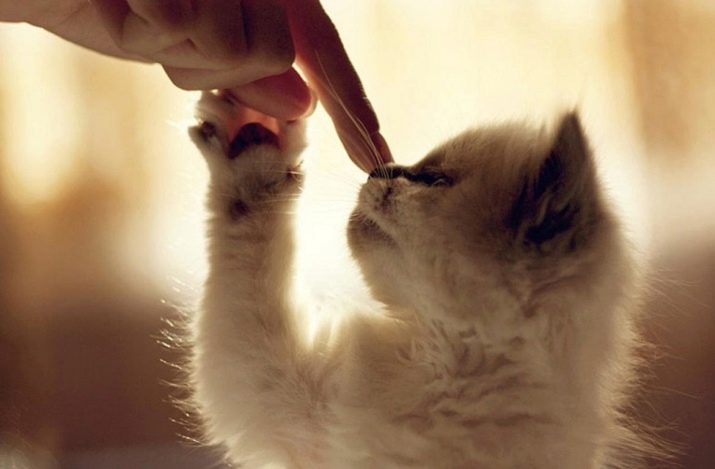
Learning involves three actions:
- tray selection;
- choice of filler;
- Choosing a permanent place for a cat's toilet.
And only when all this is done, you can introduce a small cat to the toilet. You cannot act from a position of cruelty. Some owners do this: they think that excessive strictness will immediately put everything in its place, and the cat will unconditionally obey.Give yourself and your pet three days, and until this “trial period” passes, do not try to scold him and draw premature conclusions.
For him to learn how to walk in a place reserved for delicate needs, a skill is needed. It will not form at a time.
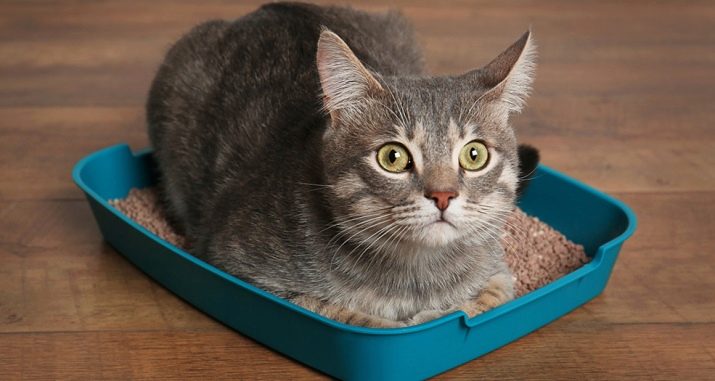
Choose a tray
The breeder’s first mistake is a small tray. For some reason, it seems to many that since the kitten is still a baby, then the tray for him should be miniature. But your baby can grow up very quickly, and when the time comes to change the tray, he is able to show character. So do not pre-doom it to stress: chose a normal-sized tray, determined a strict place for him in the apartment, and try not to change anything.
There are certain nuances in choosing a tray.
- There are trays with and without grates. The lattice covers the filler, the kitten becomes on it, so its paws will not be wet. It would seem that the ideal option, but it's not quite true: instinct will force the cat to cling to the bars with its claws. It happens that this leads to injury to the baby. Therefore, experienced breeders do not always use a grid - it’s easier for them to buy a quality filler that dries quickly.
- What will be the shape of the container, no matter. You can accustom a baby to a triangular tray, and to a square, and oval. Make sure that the tray has a protective rim: it protects the form from spilling sand when the kitten begins to clean up after itself.
- It is advisable that the purchase of the tray was not sudden. Even before the fluffy family member crossed the threshold of your house, the tray should already be in the "honorable" place. If today he sees the toilet, tomorrow a filler appears there, and the day after tomorrow the owner finally explains that there’s nothing good - the deal will not end there.
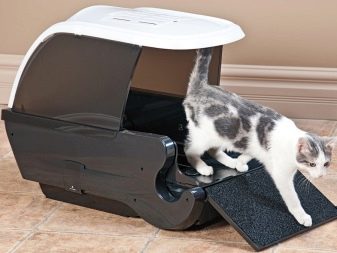
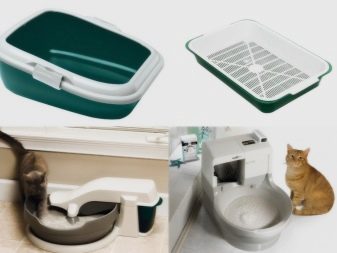
You should not choose trays that have a smell. This happens with poor-quality plastic. The stronger the plastic, the better. Extreme colors are also useless, it just seems that a bright color will attract the baby. The visual system of a cat is different from the human, because your efforts may remain unappreciated.

What should be the filler?
The requirements for the kitten’s tray filler are: eco-friendly, non-dirty feet, no pungent odor, able to moderate odor.
We will evaluate the most popular fillers.
- Silica gel. It blocks the smell well, the paws of the cat remain clean, has no smell. But! If this kitten enters the digestive tract, it is dangerous to his health.
- Woody. It copes well with masking odors, does not stain paws, is not dangerous for accidental ingestion into the esophagus. It has a faint smell of needles, most cats are either indifferent or even like it. But some cats flatly refuse to go to such a toilet.
- Mineral. Odor masking is almost zero. The paws get dirty, for the health of the cat is harmless, has no smell.
- Clay. It restrains the smell of urine, the paws get dirty, it is harmless to the digestive system, and does not irritate the smell of a pet.
- Corn. Almost copes with masking an unpleasant smell. But small particles of filler can stick to the kitten's legs and spread around the toilet. In case of accidental ingestion, it is harmless.
- Paper waste. It retains odor poorly, does not stain paws, is not dangerous for the digestive tract of an animal, and has no smell.


If you take a kitten from the house where he already used the toilet, the filler should be taken of the same type. Subsequently, it can be changed, but this does not need to be done for new training. Wood and corn fillers are chosen more often; it is believed that they are more suitable for kittens. Be sure to monitor the condition of the kitten: an allergic reaction is not excluded.
Sometimes the cat refuses to go to the toilet, because there is too little filler. Such a way to cover the tracks seems unconvincing to him, and he continues to search for a better place.
If there is a tangible flavor in the composition, this can also disorient the cat.
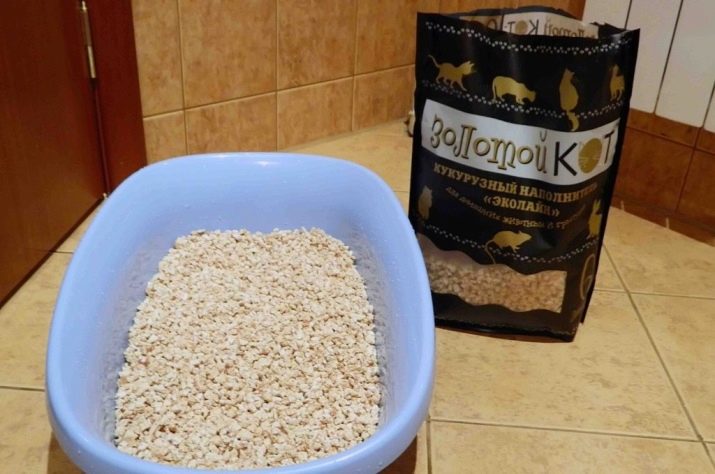
Finally, Do not buy a very expensive filler: it’s not a one-time expense, but a system one, it will not be very easy to change it later. The product should be affordable, if its purchase involves a search throughout the city, give up unnecessary difficulties.
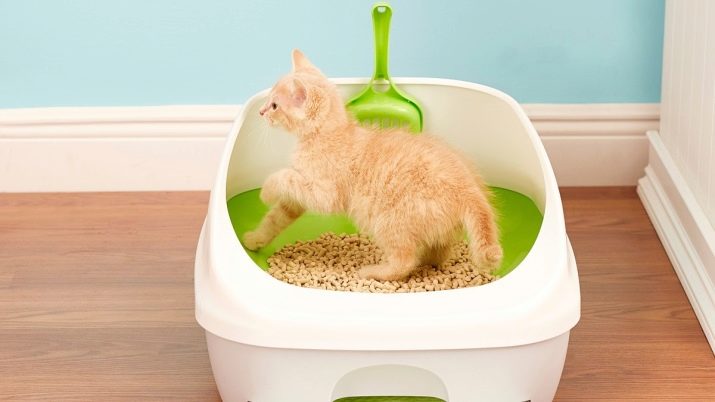
Ways to teach
So, the tray is purchased, the filler is selected, it remains only to quickly and correctly accustom the pet to the toilet. Select where the tray will stand. A passage or corridor is not suitable for this purpose, because the intimate zone really should be quiet and secluded. The best option is a bathroom and toilet. They are always open, the cat can go there, without embarrassing anyone, and without any embarrassment, do his own thing.
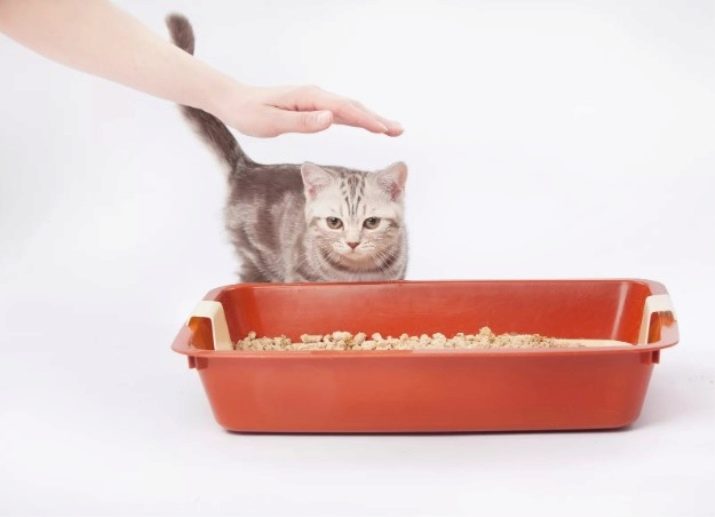
Step by step training is as follows.
- The best time for the first trip is 20-40 minutes after eating. Take the baby to the toilet, put your paws right in the tray. At the same time, pet the cat, politely “purr” with him, he should not have a sense of danger.
- As soon as you talked with the kitten, leave it in the tray, stand back. No need to "stand over the soul." The animal should look around and smell the new place for him.
- If the cat is ready, he will do his job. As soon as they see success, calmly (no need to joyfully shout and jump to the ceiling) stroke the baby, praise him. Waste should be buried with fresh filler.
- Do not rush to remove waste immediately. The cat must hear the smell in order to once again come to this place to cope with needs. But the tray is not left untouched, the place is dug in.
- If the cat does not pee, don’t be angry. Let him walk up, try taking it to the toilet again. If the baby did his work in the wrong place, without anger and aggression, easily tap his finger on his nose, tell me what exactly he blundered. With such a gesture, mom-cat makes kittens understand that they are wrong. After scolding the baby just by knocking on the nose, take it to the tray - you need to fix the logical chain.
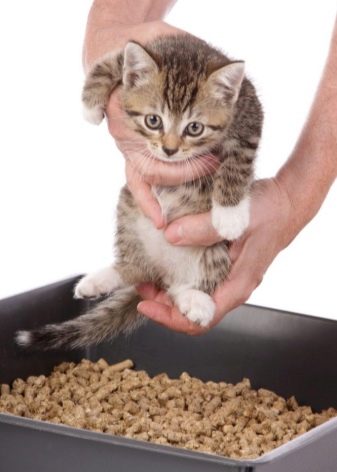
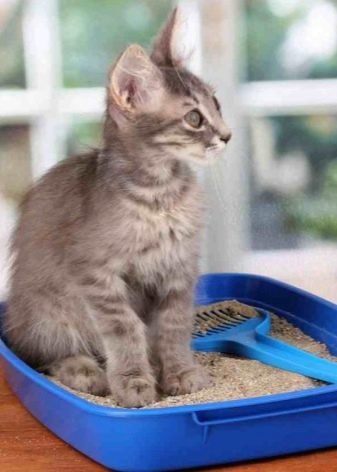
And, of course, do not scold the kitten for a mistake, if it is already irrelevant. This happens: the cat has long gone "by", and the owners scolded him for what he does not remember. Shouting and physical abuse are unacceptable.
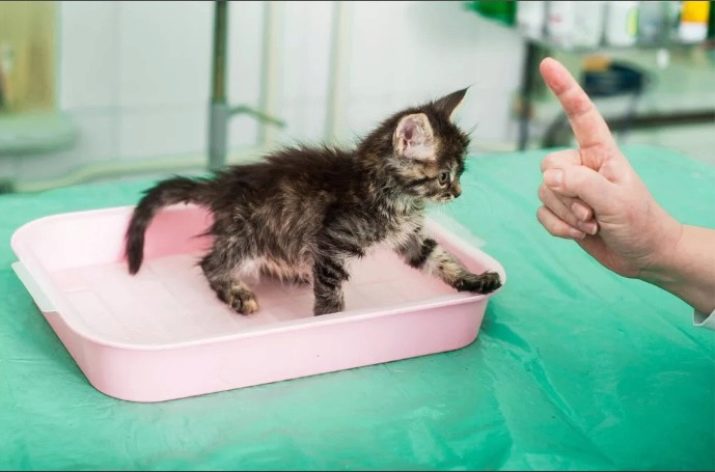
Possible difficulties
If you cannot train for a long time, you will have to carry a naughty baby in the tray more often. We saw a bunch in the wrong place, take the trouble to transfer it to the tray, so that the whim saw. If there is a puddle in the wrong place, pat it with a napkin, and then place the napkin in the tray for a while. The place where the cat blundered must be disinfected - this will help the problem not to recur.
The greatest difficulties arise when the owners try to accustom the street cat to the toilet. They, as they say, from a young age have a different idea of life, environment, way of obtaining food and comfort. And their toilet, of course, is not connected in any way. How to help such a savage? There is only one answer - you need to try different options, change something.
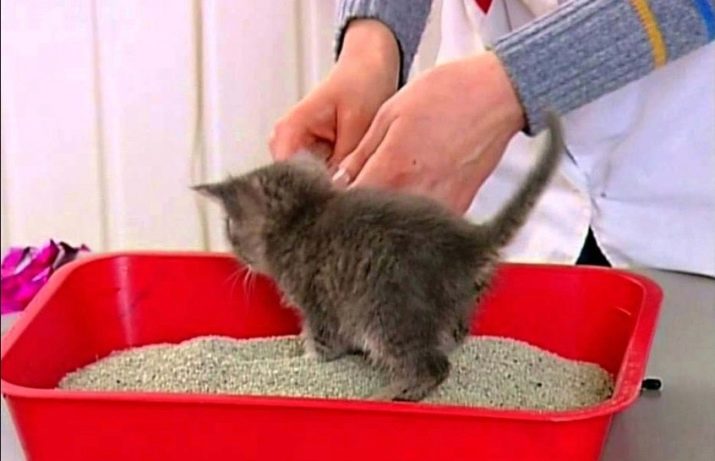
Let's see what recommendations experts give in this regard.
- Move the tray to another room. Maybe for some reason the baby is scared in the bathroom, and he does not want to trust such a secret process in this room. For example, there is a strong smell of detergents, which can easily scare away a pet.
- Remove excess sources of aroma. If in the room where there is a cat toilet, it even smells unobtrusively of citrus fruits, a cat can arrange a strike. Cats do not tolerate these smells, so do not tease them.
- Take a closer look at the place that he prefers to the tray. If there are small children in the house, and they also sometimes pee in the wrong places, the characteristic smell will attract a kitten. There is only one way out - to rinse thoroughly and clean the places of children's oversights. And to do this even before the animal appears in the house.
- Change the tray. It happens that he is extremely uncomfortable for a cat. For example, the sides of the tray are high, it’s hard for the baby to climb over them, and he seems to go to the toilet, but sometimes by.According to reviews of most cat owners, pets prefer trays with low sides even in adulthood. This is understandable - many cats are quite lazy, and sometimes they prefer not to make unnecessary movements once again in the form of climbing through the sides back and forth.
- Change the filler. It happens like this: a kitten comes to the tray, but does its business not in it, but next to it. Probably, the pet understood where to go, the tray itself suits him, but the filler for some reason is embarrassing. Will have to change.
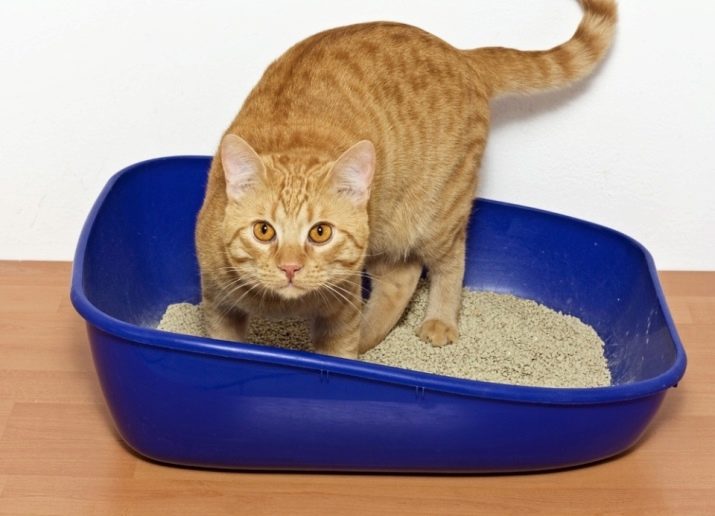
Didn’t manage to train in three days? No panic. If the cat is street, and when it appears at your home, it experiences stress, the baby may need much more time. But you took it in order to love and enjoy, which means you have to breathe and start again. But how proud you will be when the fluffy finally accustoms to the toilet!
What you can’t categorically do is poke the animal with its face in the tray, beat it and leave it without food. It’s not even worth explaining why such methods are unacceptable.
Useful Tips
Any teaching is a system. And to teach a cat to walk in a tray is also nothing more than a system. In addition, science does not stand still, and various devices that help cats not to overshadow the owners with their disobedience are on active sale today.
For example, the following tools may help you.
- Aerosols that discourage cats from wanting to crap in the wrong places. They need to handle a place where, contrary to your dissatisfaction, a cat often goes to the toilet.
- Acetic acid, ammonia. This is a worthy replacement for aerosols, but they do not discourage the cat’s desire to shit in this place, but only neutralize the smell.
- Small pebbles for the earth in flower pots. Many cats adore going to the toilet in flower pots instead of a tray. It is necessary to protect the soil from such "fertilizers", and this can be done precisely with the help of decorative pebbles.
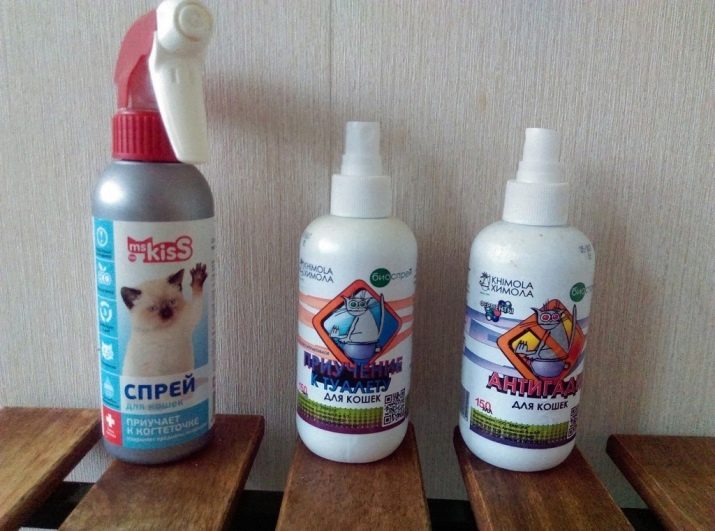
The main thing that you should remember is that any cat is trained. At a certain stage, it will seem to you that it was not the kitten that got you, but the punishment, that it is stupid and no good at all. But then you are likely to understand your mistakes. Another baby has to be taught 1 month, but the result is fixed well and firmly. There are smart cats (usually those that are older), they quickly grab everything, and after a couple of days they run to the toilet in a place clearly designated for this.
If the kitty is still quite small, you can make her an indulgence. Kittens do not always walk around the house, prefer to be in the same room. There and put the tray. And then, when the pet grows up, transfer the tray to the right place. You will also need your observations on the kitten: see how he spends time after eating. During games and fun, the baby can stop, beware. Once the baby has done this, transfer it to the tray.
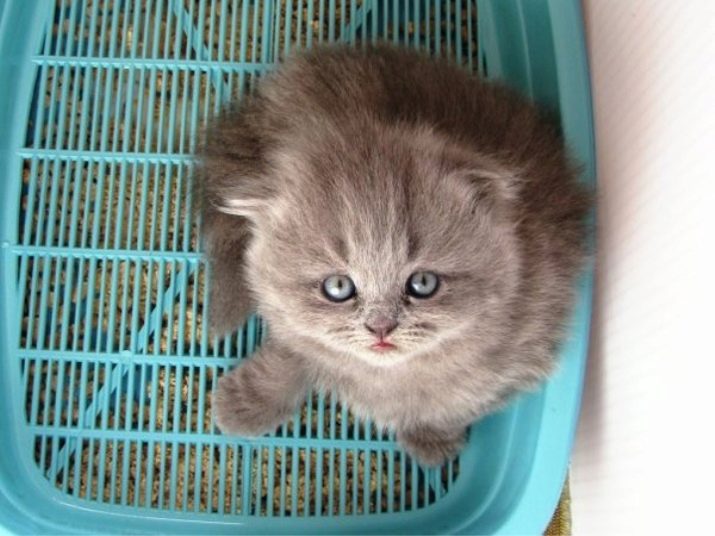
A three-month-old cat usually grasps everything much faster. He’s already mastered, he already understood who’s the boss here, the cat is ready to “cooperate”. Try not to miss this time, because as an animal grows older it is difficult to acquire new habits. If you are going somewhere (to the summer cottage, for example), take the tray with you.
They don’t take everything, considering that the cat doesn’t need it, because there is a street nearby, it’s out - here’s your toilet. But do not be so careless with handling fixed habits.
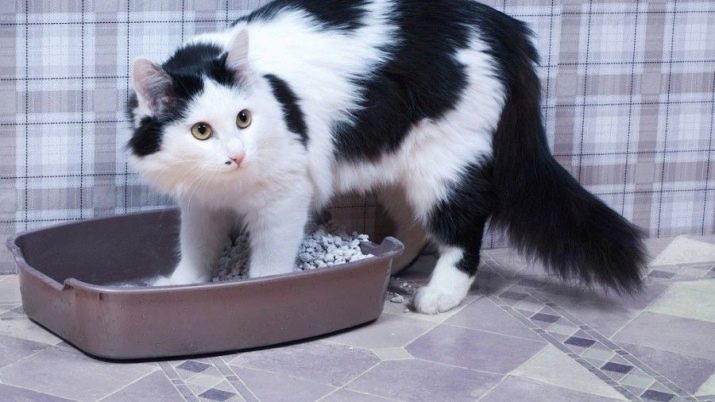
No matter how much time the training takes, it is worth it, the result is of great importance. Do not pursue records, do not listen to friends who boast about their smart and understanding cats - perhaps their success is a little exaggerated.
Detailed tips on how to teach a kitten to a tray are given in the next video.
